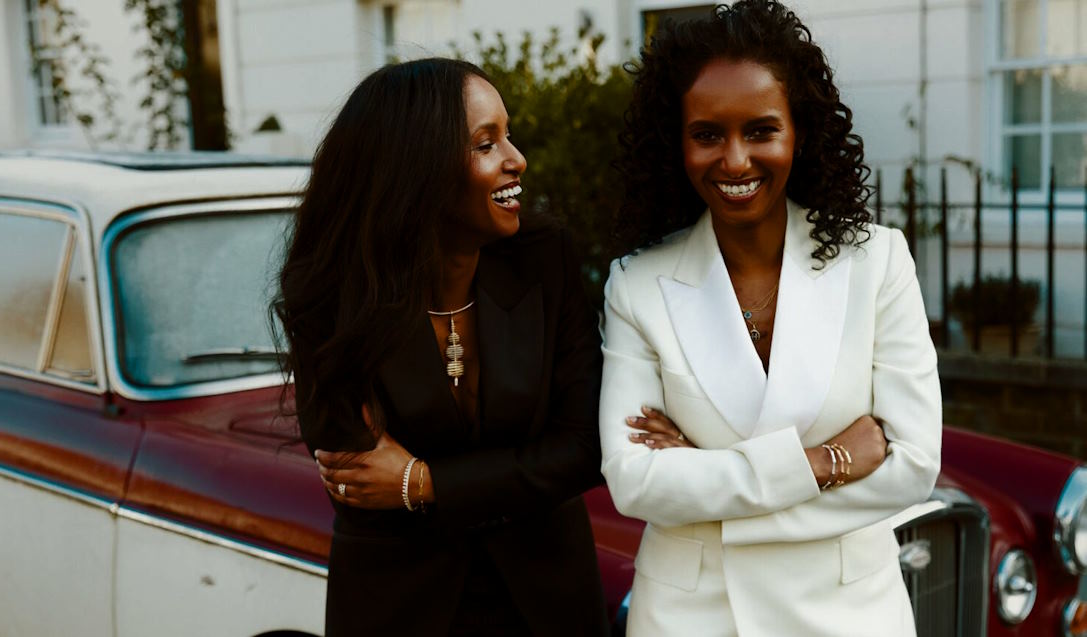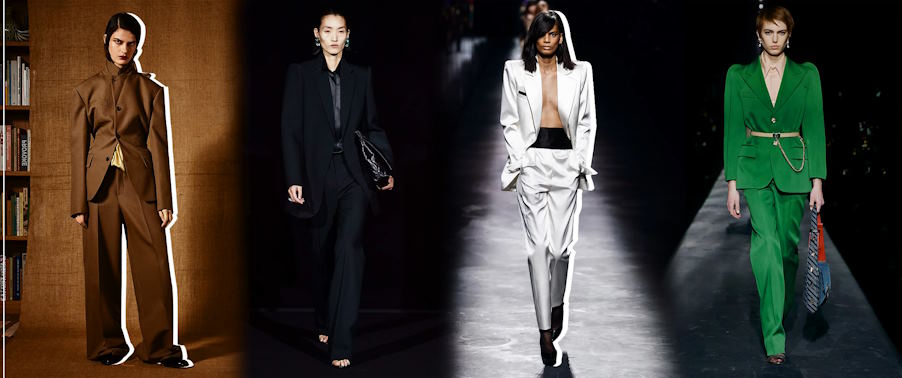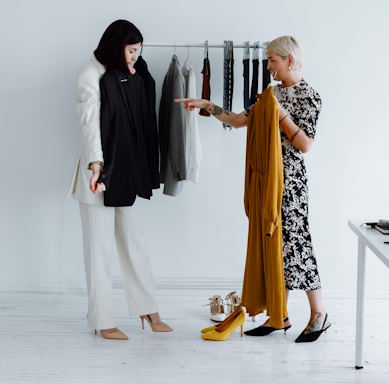For centuries, women’s fashion has been entwined with societal expectations, often prioritizing aesthetics over functionality and confining wearers within prescribed roles. However, a seismic shift occurred as the 20th century ushered in a new era of empowerment, a shift epitomized by the rise of the power suit. No longer confined to the periphery of fashion, women’s tailored ensembles took on a newfound purpose, challenging stereotypes and opening doors to a world where femininity is synonymous with strength, confidence, and independence. As we delve into the history and evolution of the power suit, we uncover not only a sartorial transformation but a narrative of social progress and self-expression that continues to unfold today.
The Rise of Women’s Power Suits
1960s-1970s: The introduction of pantsuits as a form of liberation
The emergence of women’s power suits in the 1960s and 1970s marked a pivotal moment in the history of fashion, intertwining style with the evolving landscape of gender equality. As the women’s rights movement gained momentum, the clothing choices of women became a potent medium for expressing their newfound liberation. The influence of this movement on fashion was unmistakable, leading to the rise of the pantsuit. This tailored ensemble, typically associated with menswear, became a symbol of defiance against traditional gender norms. Iconic figures like Katharine Hepburn and Yves Saint Laurent’s ‘Le Smoking’ tuxedo-style suit exemplified the audacity and confidence that the pantsuit encapsulated, challenging the status quo while redefining femininity itself.

1980s: The peak of power suits
The 1980s witnessed a surge in the popularity of power suits, propelled by the burgeoning corporate culture and the increasing presence of women in the workforce. As women entered fields previously dominated by men, they sought attire that would command respect and reflect their professionalism. The power suit answered this call, with its broad-shouldered silhouettes and assertive cuts. It became a visual representation of authority and ambition, aligning with the ethos of the era’s power-dressing trend. The classic 1980s power suit boasted padded shoulders, nipped waists, and straight-legged pants, exuding a sense of command and empowerment.
1990s-2000s: Transition to more diverse styles
The following decades witnessed a shift towards more diverse and adaptable styles within women’s power suits. Tailoring began to embrace relaxed fits and versatile designs, reflecting changing attitudes towards femininity and professional appearance. The 1990s and 2000s saw a departure from rigid forms, allowing women to express themselves more freely through clothing. Colors, patterns, and materials were explored, leading to a myriad of creative possibilities. Women’s power suits evolved into a fusion of elegance and comfort, embodying a modern approach to authority and style that resonated with a broader spectrum of personalities.
Redefining Femininity Through Tailoring
Breaking Gender Norms
In the realm of fashion, the power of the women’s power suit extends beyond aesthetics—it challenges deeply ingrained gender norms. It dismisses the notion that femininity is synonymous with fragility. Instead, it propels the idea that strength, grace, and determination can coexist harmoniously. By adopting tailored ensembles historically associated with masculinity, women reclaim authority over their appearance and redefine femininity on their terms. This conscious clothing choice serves as a testament to their empowerment, highlighting that clothing can be a conduit for self-expression and social change.

Embracing Androgyny
The power suit’s transformative journey extends to its role in blurring traditional lines between genders. Androgyny, once a fashion subversion, is now a mainstream trend celebrated for its capacity to challenge societal perceptions. As women seamlessly integrate traditionally masculine elements into their attire, the power suit becomes a catalyst for questioning the rigidity of gender constructs. This sartorial blurring resonates far beyond the fabric, reshaping how society views gender identity. By choosing styles that transcend prescribed norms, women inspire conversations about authenticity, fluidity, and the freedom to express one’s self.
Tailoring for All Body Types
Modern tailoring recognizes the beauty in diversity, catering to all body types and empowering women to embrace their uniqueness. The power suit’s evolution reflects a larger shift towards inclusivity and body positivity. This tailored transformation dismantles the archaic idea that one size fits all, celebrating the vast spectrum of shapes and sizes that women come in. In this era, the power suit is not merely a garment; it’s an emblem of self-assurance, enabling women to step into the world with confidence. By tailoring ensembles to align with their bodies, women don’t just wear the power suit—they embody it, embracing their individuality and unleashing their potential for self-expression.

